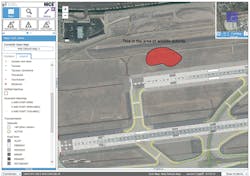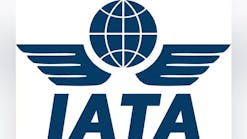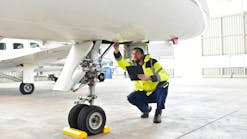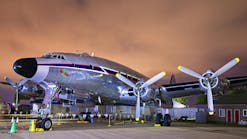William Shakespeare penned “that a rose by any other name would still smell as sweet.” A similar tale could be spun for the airport control room. Though the name of this operational epicenter varies from airport to airport, it is the hub for all that goes on inside the fence. “It is the method by which airports share a common operating picture between those in the field and those in the control room,” says Chris Wooten, executive vice president of NICE Systems’ Security Group.
But when all the data goes to a central location and there are 40 or so people in the field to share information with, key incident details might be missed—a fact that’s simply unacceptable in a mission-critical environment like an airport.
To ensure critical information readily flowed between its control center and airport operations employees, Los Angeles International Airport (LAX), who serves 66.7 million passengers annually, built a new operations center, dubbed the Airport Resource Coordination Center or ARC, on the western side of the airport in 2011.
The airport equipped its ARC with NICE Situator, which enabled it to integrate information from various security and operational systems, including video surveillance, CCTV and access control, and generate automated, adaptive response plans for personnel in the field to follow.
But though information sharing was vastly improved through these efforts, airport officials wanted more. “It received a lot of input from CCTV and our active control devices, but in many ways—even with all that input coming in--you don’t get a lot of eyes on the ground feeding right into the ARC,” says Dom Nessi, executive director and chief information officer at Los Angeles World Airports.
In May 2012, the airport sought to expand this system to ensure the boots on the ground (there are up to 45 operations employees roaming the airport with mobile devices in hand at all times) received key information in real time.
The airport selected NICE Systems and AECOM Technology Corporation to aid in this effort by extending the airport’s situation management capabilities from the control room to the field. “The goal was to integrate [control room software] with the airport’s Geographic Information System (GIS), which was their physical infrastructure data about LAX, and put it in the hands of users in the field to extend it beyond just a command-and-control product,” says Kevin Carlson, vice president of Aviation Systems for AECOM.
In September, the airport reaped the fruit of this two-year development effort when it deployed the NICE Situator Enterprise Geographical Information System (EGIS) Web application, which enables field personnel to view all open security and operational incidents in Situator and log new incidents from their tablet computers. This system creates a shared environment for managing incidents, leading to better collaboration between teams, increased situational awareness for all operators and more effective responses, according to Nessi.
“Airport operations staff at LAX can now use iPads in the field to collaborate as they manage incidents, view critical information about the facility and the infrastructure, and communicate with the command center without radio,” says Carlson.
Nessi stresses the NICE-AECOM solution allows the airport to transform the way it manages safety, security and operations. “Based on our ongoing success with NICE Situator, we sought a way to apply these capabilities to our field operations,” he says. “Now, not only are we able to maximize the use of our existing PSIM, situation management and GIS technologies, we are strengthening our entire security and operations apparatus.”
Frosting the Cake
A key element of the new system is its spatial capability, according to Nessi. “This is like the frosting on a really good cake,” he says. “It adds a layer of data we didn’t have in the system before.”
The resulting Web application uses the sophisticated geospatial and mapping capabilities of Esri’s ArcGIS Server to provide customized, layered views of airport buildings, property and infrastructure. With the system, all relevant stakeholders can visualize the same incident on a map and engage in interactive dialogue via the comments log. They can also share response plans, like an evacuation route, by drawing on the map, annotating it and saving it to the system.
As operations personnel drive around the airport, the software on their mobile devices show a dot that moves around with them similar to the way a global positioning system (GPS) shows a vehicle moving down the road. When they notice something that needs to be addressed, they can make a notation on the map.
Adding this GIS component changes incident response. Before, when an incident happened, folks in the field were notified by the command center via telephone and were verbally told where problem was. “If there was a fuel spill on the airfield, someone would radio that in, they would contact another person to clean it up, then that individual would go out and try to locate the fuel spill, follow procedure to clean it up, and make a text entry in a log somewhere,” Nessi says.
Today, if a worker notices that same fuel spill, they can draw a picture on a map of where the spill is, submit the information to the ARC, and it enters the system as an immediate incident that needs rectifying. The software dispatches an alert to operations personnel in the area, who then follow procedure as detailed in the work order, and check off each step with their mobile device. When the work is done, the software notifies the control center of the job’s completion.
“I mentioned a fuel spill but the same process would be followed for leaking water in a terminal, an escalator out of service, or even something they see on the runway,” says Nessi. “Now all of our operations staff can see the incident in real time. The spatial data really helps. You can say there is water leaking in Terminal 1, but until you have an exact picture of where the water is, you can’t do anything. Now they can not only report it, but they can take a photo of it and attach it to the work order so that people in the ARC see exactly what they’re seeing in the field.”
Nessi adds that this information helps the airport avoid redundant work orders for the same incident. “If they see something while they are out there, they can check the system to see if a work order has already been placed,” he says.
The Web application also helps field operators efficiently manage day-to-day tasks, such as FAA-mandated Part 139 airfield inspections. Under Federal Aviation Regulations Part 139, U.S. commercial service airports are required to conduct various assessments of each runway; examine pavement markings, lighting, signs and safety areas; and oversee ground vehicle operations. If an issue arises, field operators can easily create a new incident on their mobile devices, which is resolved through Situator’s workflows and recorded for compliance purposes.
The Power of GIS
“GIS in a traditional sense serves as almost an archiving function for engineering data,” says Carlson. “A taxiway gets built, a bunch of airfield lights get put in place, and some infrastructure goes in underground. All of that information goes into a GIS and it sits in a database for engineers to access.”
By allowing operations personnel to access GIS information, Carlson says the system gives them real-time access to all data about the facility and its infrastructure. “You can’t separate operational events and incidents from the infrastructure you’re trying to protect or enhance,” he explains.
By adding the GIS layer to the system, workers have a map that contains critical infrastructure that helps them determine their response. They can immediately pull up assets in an impact zone--for instance, a video camera within 100 feet of the incident --or use the application’s robust search engine to search for nearby geospatial assets, like the exits closest to an incident location. They can also create new incidents, manage ongoing ones and complete specific tasks assigned to them, reducing reliance on radio communications and enhancing compliance.
The AECOM/Nice system also contains standard operating procedures for a host of common incidents so that workers know what to do when they encounter them.
“That’s part of the analysis process that we do. We work with our operations staff to determine the critical processes to include,” Nessi says, noting that the system allows authorized personnel to add processes or update procedures as necessary.
Situation Analysis
Besides streamlining the work order process, the NICE/AECOM system also stores data for reporting and analysis.
Consider an aircraft wildlife strike, which Carlson says happens several times a week at a busy airport such as LAX. Previously a worker would have recorded information about this strike, which would have included notes about the type of wildlife, the time and the estimated location. Today, workers mark the strike’s precise location on a GIS map, fill in detailed data about the incident, giving the airport a complete incident record. With all incidents of this type gathered into one place, airport officials can compare incidents, see patterns, and plan a course of action.
The software also ties into the airport’s tenant information. Every time the Commercial Development Group assigns a new tenant to a space, all the information about that tenant including contact information is added to the system. So if for example a suspicious bag is found within a terminal, and the airport needs to create a perimeter around it, the system gives them ready access to all tenants in the area, including their phone numbers. “Rather than rely on a printed contact directory and a paper map, they can readily see who they need to contact in that area and the numbers to reach them at,” Carlson says.
“One of the real advantages is you have a full record of any actions that are taken,” he continues. “If you have a suspicious bag, and someone uses their mobile device to plot the incident at 10:03 a.m., then at 10:07 a.m. they elected to take a second step and secure the area, you can see that four minutes has passed. This time-stamped record of the actions that were taken, the comments that were exchanged, and the information that they were using gives them the ability to fully reconstruct the event.”
The system not only records what’s taking place in Situator but other things going on such as what happened with the radio or telephone system and what the scene looked like. “This gives us a more comprehensive understanding of what occurred,” says Nessi. “Just looking at a few reports doesn’t give a full context of what an individual was hearing or seeing at the time of the incident.”
This allows duty commanders at the start of their shifts to review high priority events that took place during the last eight hours. And it allows them to perform a post-incident analysis for debriefing. “We find our customers always want to understand how they handled that situation,” says Wooten. “Did they handle it according to standard operating procedures? Did the response go well and if not do they need to change their response for the future? They can say we did something but it didn’t work well, and how can we change the procedure so that the next time we do it, we handle it in a more efficient and effective manner.”
He continues, “Extending the reach of NICE Situator into the field significantly augments security operations. In a dynamic airport environment like LAX, it is critical to maintain a direct line of communication between multiple users by providing situation management capabilities both inside and outside of the control room. This model for mobile situation management demonstrates NICE’s leadership and technology innovation, which can be tailored to the needs of other airports and industries as well.”





